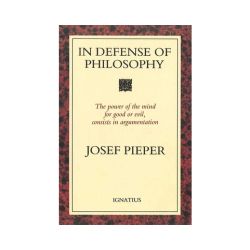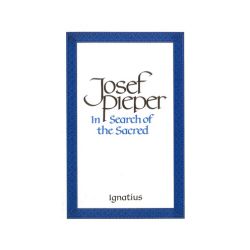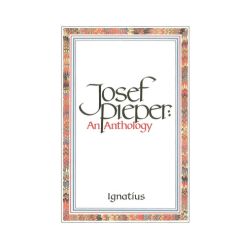
We’ve pulled together a great stack of March read-alouds for you and your family. Patrick: Patron Saint of Ireland recounts the life of Saint Patrick. Through beautiful illustrations and simple storytelling, the book follows the journey of Saint Patrick from his youth in Britain to his kidnapping by Irish raiders, his years as a slave, his escape, and his eventual return to Ireland as a missionary. Rechenkas Eggs is a charming picture book by Patricia Polacco. The story follows an elderly woman named Babushka who lives in a small Russian village and owns a goose named Rechenka. Through vibrant illustrations and heartfelt storytelling this tale captures the spirit of generosity and the joy of Easter celebrations. Tale of Three Trees is a beloved tale that tells the story of three trees with big dreams. Each tree aspires to greatness: one wants to be made into a treasure chest for precious jewels, another dreams of becoming a mighty ship that carries kings, and the third hopes to remain tall and point to God. However, as their lives unfold, each tree’s destiny turns out differently than expected. The Jesus Storybook Bible presents the overarching narrative of the Bible, from Genesis to Revelation, with a focus on Jesus Christ as the central figure. Unlike traditional Bible storybooks, it doesn’t merely recount stories, but it highlights the connections between each narrative and how they point towards the ultimate story of God’s redemption through Jesus. Little Pilgrims Progress is a children’s adaptation of John Bunyan’s classic allegory “The Pilgrim’s Progress.” Retold by Helen L. Taylor, it follows the journey of a young boy named Christian as he embarks on a quest from the City of Destruction to the Celestial City. Miss Maple’s Seeds is a delightful children’s story that revolves around Miss Maple, a nurturing and caring character who collects lost seeds and cares for them until they are ready to find their forever homes. Goodbye Winter Hello Spring celebrates the transition from winter to spring. Through beautiful illustrations and simple text, the book follows a young child as they explore the changes in nature, from the melting snow to the blossoming flowers and the return of animals.

Do Mornings Well! “Win the Morning, Win the Day!” I see this quoted often in books, on blogs, Instagram feeds, and Facebook pages that are dedicated to productivity, entrepreneurship, personal growth, and habit development. I’m not an entrepreneur, but I’m a bit of a productivity/habit/organization nerd, and over the last several months, I’ve been wondering how some of the excellent advice that is given in the business space might apply to homeschooling. One of the key concepts that I come across on a regular basis is the idea of setting yourself up to win your mornings. In the business world that often means being up at 5 am, getting in a good workout, answering emails, reviewing the day’s schedule of meetings, and planning out a list of tasks. Winning the morning is a concept that can be applied to anyone’s life and I’ve got three topics that I’d like to share with you over the next several months that will help you win your homeschool mornings. Morning Time Building Habits Bullet Journaling Morning Time: Mornings with my children have always been a treasured time. So much so that it was a challenging adjustment as my children grew and started to be out of the home most mornings with work and post-secondary classes. The memories of first morning smiles from my babies, first hugs of the day from my toddlers, and big kids who always seemed to be in the mood to snuggle first thing in the morning are some of my favourite mothering moments. Our homeschool mornings have always been gentle and slow-moving, but productive. The nighttime nursing years rarely saw me out of bed before the little ones, but now, with my nursing years behind me, I’m able to get out of bed before my children and accomplish a few things before waking them up to get started with their day. I encourage you not to miss the opportunity we have to make special morning memories. It’s worth seeking out how to do them well. And winning the morning sets you up for a great day. I first heard about morning time at a homeschool conference (also called morning baskets, lunchtime learning, together time, morning meeting, family learning time, and circle time). The concept is simply gathering your children together to learn something together and it is a great way to start the day. We have tried implementing this concept at other times of the day, and you should do what works for you, but I think there are real benefits to sticking to mornings. Morning Time starts your day with order and routine, ensures that enrichment studies get done, and my favorite…if the rest of our day falls apart, we have still engaged in meaningful learning. Getting Started with Morning Time You don’t need heaps of time. Start by setting aside 20-30 minutes and build up from there. I like to use several resources each morning, but you can start with one, and add on as you go. If you are already doing a regular morning devotion, add one more component to your Morning Time to get you started. Storage for Morning Time Resources When I first heard about Morning Time, it was referred to as a Morning Basket and I opted to use an actual basket. We outgrew that basket quickly so I currently use a 3-tiered rolling cart, but you could use a bookshelf or box. Portable storage is ideal if you think you might want to do morning time curled up on your bed one day and at the kitchen table the next. Scheduling your Homeschool Morning Time Once you have built up a stack of resources you will want to consider scheduling. My preference is a flexible loop schedule. I set things up so that I can move a resource that I’ve used one day to the back of the stack to wait for another day. The only one I use daily is the bible resource. You could opt for a set schedule too, where you have particular resources that are used on certain days. I prefer to keep things flexible. I make morning time a priority but there are times where I have to set it aside or we have to cut our time short so looping through the resources seems to work best for us. Ages & Stages and Morning Time Resources I’m currently spending my mornings with my four youngest (ages 7-15). I have found that when we have used a resource that is geared towards younger children, the older ones have found the review helpful; when the resource is geared towards older ones, the younger ones still seem to be able to glean bits of information that build over time. I would encourage you not to fret over the age for which a particular resource is intended. The bible resource we are currently reading is designed more for my 10-year-old but I know that it is a helpful review for my 12 & 15-year-old and my 7-year-old is making connections to the resource we used last year that was geared towards his age. Key Components of Your Morning Time Devotions. Reading a chapter-a-day from the bible works well or you can opt for a Bible storybook. At times we’ve added bible memory work. And when we attended a large church, we had a special prayer project where we rotated through praying for our missionaries (a practical geography lesson too). I would highly recommend any of these resources; we’ve used many of them. The Ology and Wonderfull are next on our list after we are finished with The Children’s Illustrated Bible. Other Bible Storybook Resources Include: The Big Picture Story Bible The Children’s Illustrated Bible The Child’s Story Bible The Story Bible The Golden Children’s Bible Jesus Storybook Bible Story Bible for Older Children The 100 Most Important Events in Christian History When you’re ready, add a creative component: drawing, picture studies, poetry, a simple seasonal craft, and music
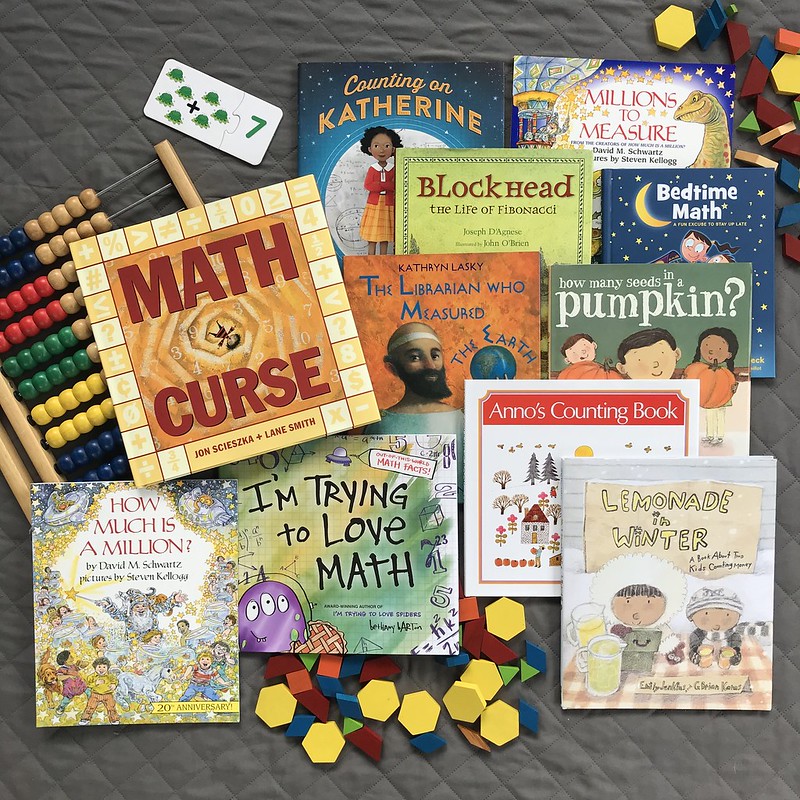
Stories stick and that makes them a great educational tool. Facts are more easily and accurately remembered when they are part of a story and there is no shortage of facts when it comes to math! In this blog, let’s talk about how using picture books can make learning math more fun and meaningful. We all know that a well-written homeschool curriculum is invaluable and as our children move through their homeschooling years, reading books does tend to give way to more curriculum. There is, however, nothing quite like the gentle learning that happens as you curl up on the couch and read books with your children; especially in the younger years. Using math books in the early years will help fill your children with mathematical facts and concepts in a fun and engaging way long before you have to set them in front of their first math textbook. In fact, without much thought, we give our children years of stories and special times before we ever sit them in front of a grammar textbook. What would happen if we were purposeful in cultivating an interest in math by using books, baking, games, projects, and money activities before they ever had to work through a math text? I’ve really enjoyed reading through these math picture books with my children. We use them as part of our morning time, and they are bringing math to life. I’m regularly negotiating with my reluctant learner but he’s always up for a good story; even a math story. Math picture books help children make connections between math concepts and the real world, they introduce students to math vocabulary and math heroes, and they combine literacy skills with math. Many times my reluctant learner has literally disappeared under the table as I’ve encouraged him to answer the math questions in his workbook but math questions that are asked as part of a story seem to fly under his radar and he’s happy to answer them. Here’s a great list of just some of our math picture books. They are full of facts, concepts and even encouragement and humour. You and your children will also be inspired by some math heroes, learn a bit about history, and enjoy some great artwork! Counting on Katherine Millions to Measure Blockhead Bedtime Math Math Curse The Librarian who Measured the Earth How Many Pumpkin Seeds How Much is a Million I’m Trying to Love Math Anno’s Counting Book Lemonade in Winter by Adrianne Curwen Adrianne is a wife to a public-school educator/administrator and a homeschooling Mama to seven children. She believes that we have a unique opportunity as homeschoolers to design individualized education that suits giftings, interests, and passions. She and her husband have used a blend of registered homeschooling, enrolment with independent DL schools, and participation in public trade school programs to design individualized programs for their children. She is passionate about using read-alouds, picture books, novels, and conversations to educate her children but also gets excited by the amazing homeschool-designed curriculum that’s out there. Adrianne is thrilled by her new role at Classical Education Books and is grateful to have an opportunity to learn something new. She is grateful, every day for her saviour, Jesus Christ, and has no greater joy than when she sees her most important missions field walk with Him.
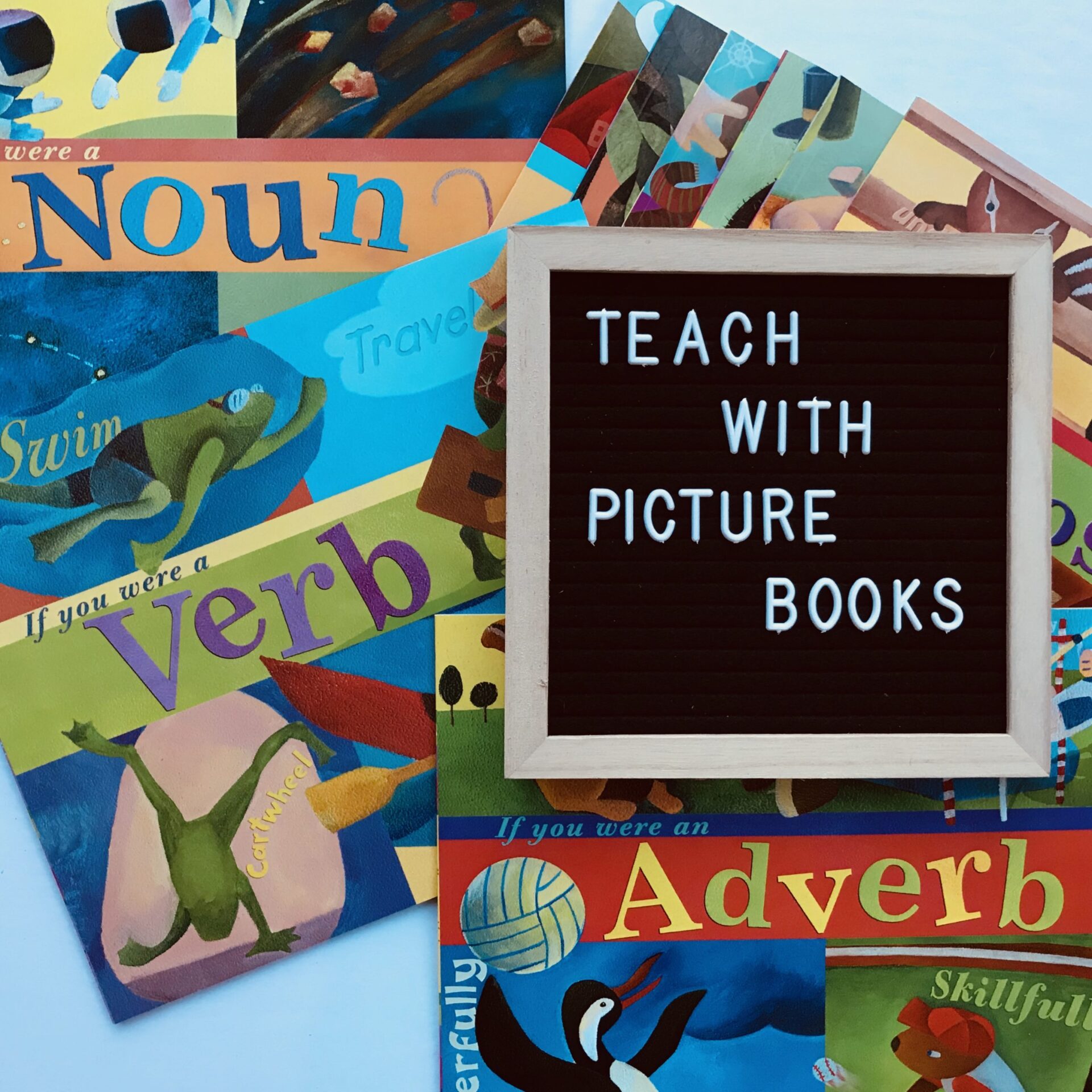
Picture books are a wonderful way to introduce your children to all kinds of topics. The selection of quality picture books is amazing and reading aloud to your children is such a natural and gentle way for your children to learn. I can’t encourage you enough to be purposeful in carving out a designated read-aloud time every day. If Morning Time or a Morning Basket is already a part of your regular routine, these should be in there! (If you are not familiar with the concept of a Morning Basket, click here to link to a short video that will help you get started.) Cycling through these stories throughout the year will give your young children a solid grasp of basic grammar. My 7-year-old, who has not been introduced to any grammar concepts yet, had a clear understanding of nouns after the first read-through, and even my 9-year-old who has completed 2 years of formal grammar curriculum enjoyed these books. There is a suggested game at the end of each book that is simple and fun. Don’t dismiss big kids before you read one of these to a younger one; they work well as a simple review, and I found that my young ones enjoyed having the big ones participate in the game. Order a few to get started with but you’ll probably be back for more. If You Were a Noun If You Were an Adjective If You Were a Verb If You Were an Adverb If You Were a Preposition If You Were an Interjection If You Were a Conjunction If You Were a Homonym or a Homophone If You Were an Antonym by Adrianne Curwen Adrianne is a wife to a public-school educator/administrator and a homeschooling Mama to seven children, ranging in age from 7 to 23. She believes that we have a unique opportunity as homeschoolers to design individualized education that suits giftings, interests, and passions. She and her husband have used a blend of registered homeschooling, enrolment with independent DL schools, and participation in public trade school programs to design individualized programs for their children. She is passionate about using as many read-alouds, picture books, novels, and conversations to educate her children but also gets excited by the amazing homeschool-designed curriculum that’s out there. Adrianne is thrilled by her new role as Communication Specialist for Classical Education Books and is grateful to have an opportunity to learn something new. She is grateful, every day, for her saviour, Jesus Christ, and has no greater joy than when she sees her most important missions field walk with Him.

A stack of books to help you teach through the month of March. I find this such a fun way to learn something new. World Water Day From Brook to Ocean Water Dance Down Comes the Rain Celebrate Spring Karl, Get Out of the Garden The Reasons for the Seasons How Does a Seed Sprout Palm Sunday A Child’s Garden of Bible Stories The Jesus Storybook Bible World Poetry Day The Llama Who Had No Pajama A Child’s Book of Poems The Selected Poems of Wendel Berry Saint Patrick’s Day Patrick St. Patrick’s Day by Adrianne Curwen Adrianne is a wife to a public-school educator/administrator and a homeschooling Mama to seven children, ranging in age from 7 to 23. She believes that we have a unique opportunity as homeschoolers to design individualized education that suits giftings, interests, and passions. She and her husband have used a blend of registered homeschooling, enrolment with independent DL schools, and participation in public trade school programs to design individualized programs for their children. She is passionate about using as many read-alouds, picture books, novels, and conversations to educate her children but also gets excited by the amazing homeschool-designed curriculum that’s out there. Adrianne is thrilled by her new role as Communication Specialist for Classical Education Books and is grateful to have an opportunity to learn something new. She is grateful, every day, for her saviour, Jesus Christ, and has no greater joy than when she sees her most important missions field walk with Him.
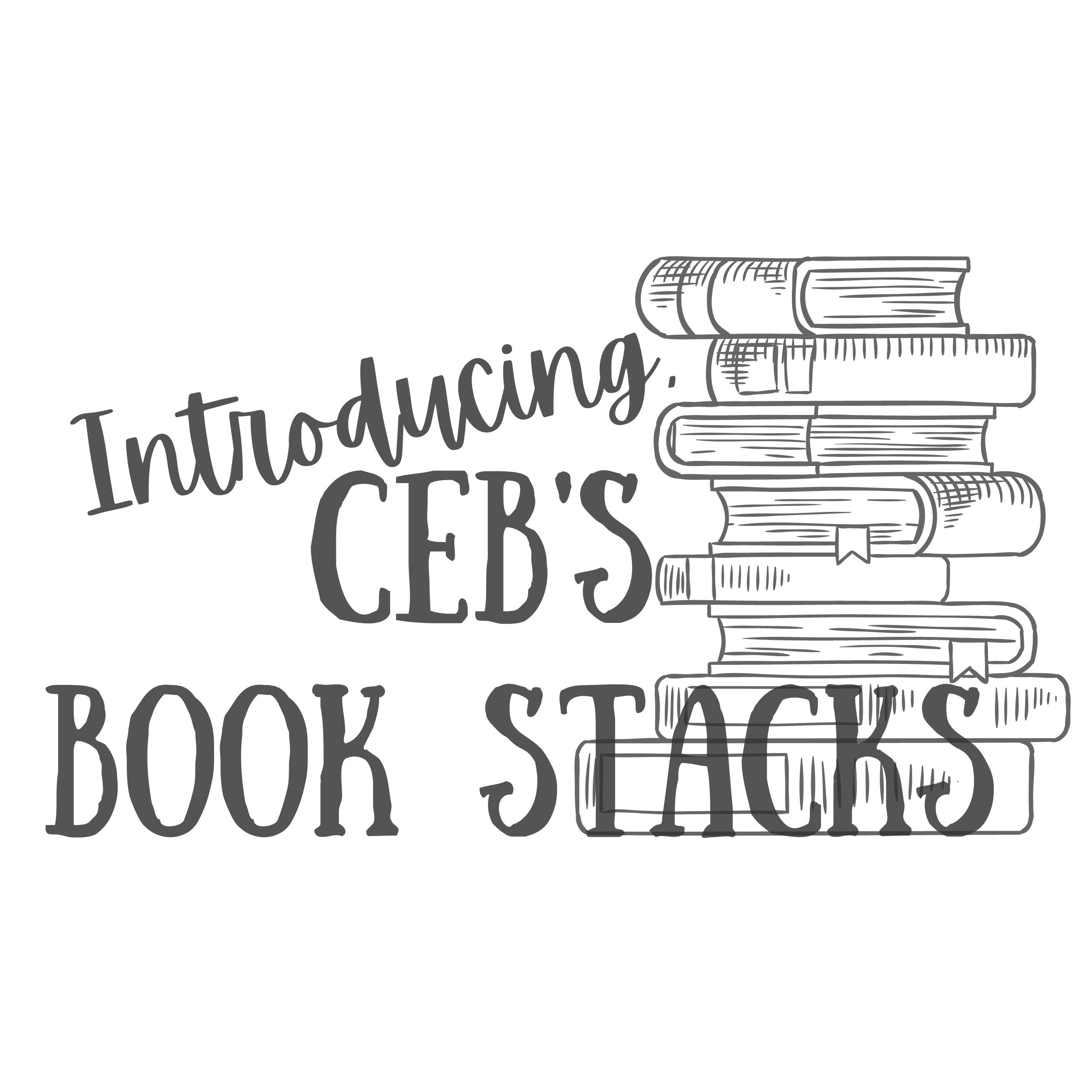
Whether books are the foundation to your child’s learning, something you use to supplement curriculum, or you simply value what books bring into your home, CEB’s Book Stacks are something we’ll be pulling together on a regular basis to help you educate your children. Making Memories Themes are fun and a key ingredient to making memories. I use them regularly in life and book themes are no exception. I pull out all the fall-themed picture books off our bookshelves every September, we have a bin of Christmas books that gets hauled out in December, and I love finding books that coordinate with the other things we have going on. Our trip to an ocean cabin included a bin full of ocean-themed activities: picture books, puzzles, games, and coloring sheets. What stuffies do you bring on an ocean vacation? Well, the mermaid and sea star of course. During our family read-aloud time of The Green Ember, it just made sense to find picture books about Rabbits. This year my plan is to purchase books about bacteria, viruses, and pandemics. Boundaries Help Creativity Themes introduce boundaries. We don’t often think of boundaries as enhancing creativity or opening up our world, but they do. A few years ago, we had a fun and creative time planning our meals for Valentines’ Day when we decided that everything had to be red. And there was that year we had silent reading themes: Mondays were for science, Tuesdays were for history, Wednesdays were for fiction, and Thursdays were for bible stories. This was a good strategy to encourage reading outside of the “go-to” genre. Books are a Curriculum Complement Homeschool Mamas have a special relationship with books. We know that there is a heap of learning that can be pulled out of living books. I find myself leaning more and more on books particularly in the primary years. It’s such a sweet and gentle way to learn. I encourage you to weave living books into your curriculum where you can, especially when you notice a child being drawn into a particular topic. Benefits of Living Books -spark curiosity -are a delight -present facts as part of a storyline -lead to greater retention -are exciting -are whole books -draw a reader in -make the subject matter come alive Immersion Immersing a child in a topic is a great way for them to learn. This Winter Book Stack has so much to offer. Snow is Falling, Snowflake Bentley and Snowman-Cold=Puddle are all science books. Robert Frost’s Stopping By Woods on a Snowy Evening is a poetry book, Winter on the Farm is a social studies book, and Snow is a Language Arts book where you can introduce your children to what it means to write lyrically. I love how the pictures in Owl Moon capture the feeling of a winter’s night and White Snow Bright Snow captivates the delight children feel when it starts to snow. Katy and the Big Snow is a sweet fictional account in which your child can share in Katy’s shining moment experience, The Mitten is a traditional Ukrainian story, and in Brave Irene, you’ll be sending your child out on an adventure as the main character faces a snowstorm. How fun would it be to have these books on hand for the next snow week? Add a snowflake craft and you’ll have a week to remember. I hope you enjoy this Book Stack. We can’t always add the book suggestions that you all have. We sure love to hear about them though and add them to our Wishlist. by Adrianne Curwen Adrianne is a wife to a public-school educator/administrator and a homeschooling Mama to seven children, ranging in age from 7 to 23. She believes that we have a unique opportunity as homeschoolers to design individualized education that suits giftings, interests, and passions. She and her husband have used a blend of registered homeschooling, enrolment with independent DL schools, and participation in public trade school programs to design individualized programs for their children. She is passionate about using as many read-alouds, picture books, novels, and conversations to educate her children but also gets excited by the amazing homeschool-designed curriculum that’s out there. Adrianne is thrilled by her new role as Communication Specialist for Classical Education Books and is grateful to have an opportunity to learn something new. She is grateful, every day, for her saviour, Jesus Christ, and has no greater joy than when she sees her most important missions field walk with Him.


